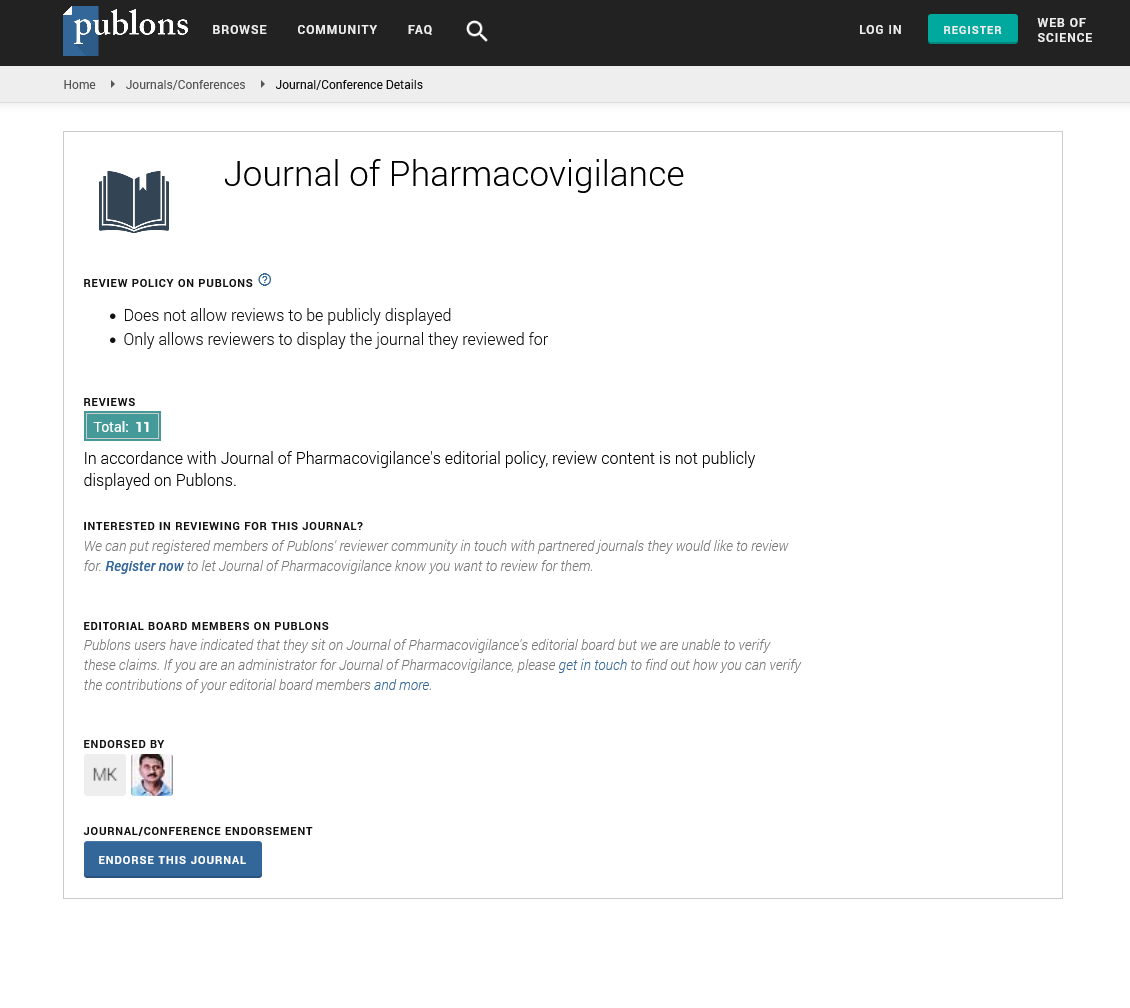Indexed In
- Open J Gate
- JournalTOCs
- The Global Impact Factor (GIF)
- RefSeek
- Hamdard University
- EBSCO A-Z
- OCLC- WorldCat
- Publons
- Euro Pub
- Google Scholar
Useful Links
Share This Page
Journal Flyer

Open Access Journals
- Agri and Aquaculture
- Biochemistry
- Bioinformatics & Systems Biology
- Business & Management
- Chemistry
- Clinical Sciences
- Engineering
- Food & Nutrition
- General Science
- Genetics & Molecular Biology
- Immunology & Microbiology
- Medical Sciences
- Neuroscience & Psychology
- Nursing & Health Care
- Pharmaceutical Sciences
Perspective - (2024) Volume 12, Issue 3
Drug Repurposing Strategies for Enhanced Therapeutics
Rowan Harper*Received: 28-Aug-2024, Manuscript No. JP-24-27176; Editor assigned: 30-Aug-2024, Pre QC No. JP-24-27176(PQ); Reviewed: 13-Sep-2024, QC No. JP-24-27176; Revised: 20-Sep-2024, Manuscript No. JP-24-27176(R); Published: 27-Sep-2024, DOI: 10.35248/2329-6887.24.12.489
Description
To develop new therapeutic options, drug repurposing has emerged an innovative strategy that identifies by using existing medications. This approach offers a faster and often more costeffective route to bring treatments to patients, as it leverages the known safety profiles of approved drugs. However, while drug repurposing holds great promise, it also necessitates a careful evaluation of the benefits and risks involved. Pharmacovigilance, the practice of monitoring the safety of medicines, plays a key role in ensuring that repurposed drugs are both effective and safe for their new indications. Drug repurposing, also known as drug repositioning, involves investigating existing drugs for new therapeutic purposes. This strategy can significantly reduce the time and cost associated with drug development, as repurposed drugs have already undergone extensive testing for safety and efficacy in their original indications. Repurposed drugs can reach the market more quickly than new drugs, as much of the preclinical and early clinical testing has already been completed. This is particularly advantageous in addressing urgent healthcare needs, such as emerging infectious diseases or rare conditions. Drug repurposing can reduce these costs by bypassing some of the early stages of drug development, making it a more economical option for pharmaceutical companies and healthcare systems. The probability of success in drug development is higher for repurposed drugs compared to new chemical entities. This is because repurposed drugs have already demonstrated safety in humans, reducing the likelihood of unexpected adverse effects.
Despite the advantages, drug repurposing is not without risks. The safety profile of a drug in its original indication does not necessarily translate to its new use. Pharmacovigilance is essential in identifying and mitigating these risks, ensuring that the benefits of repurposed drugs outweigh potential harms. Key aspects of pharmacovigilance in drug repurposing include: Continuous monitoring of repurposed drugs after they are approved for new indications is potential. Post-market surveillance systems collect data on Adverse Drug Reactions (ADRs) from healthcare providers and patients, helping to detect any safety signals that may arise with the new use. Developing comprehensive Risk Management Plan (RMP) for repurposed drugs is essential for managing potential risks. These plans outline specific measures to monitor and mitigate safety concerns, including additional studies, risk communication strategies and targeted safety interventions. Utilizing Real-World Evidence (RWE) from clinical practice and observational studies can provide valuable insights into the safety and efficacy of repurposed drugs. RWE helps to identify any differences in safety profiles between the original and new indications, guiding appropriate risk management strategies. Engaging patients in pharmacovigilance activities is critical for capturing comprehensive safety data. Patient-reported outcomes and experiences can provide a deeper understanding of the realworld impact of repurposed drugs, including any adverse effects or benefits that may not be evident in clinical trials. Achieving the right balance between benefit and risk is the cornerstone of successful drug repurposing. While the potential benefits of repurposed drugs are substantial, it is essential to carefully evaluate and manage any associated risks. Strategies for balancing benefit and risk in drug repurposing include: Before repurposing a drug, it is important to conduct a thorough preclinical assessment to understand its potential effects in the new indication. This includes evaluating the drug's pharmacodynamics, pharmacokinetics and potential interactions with other medications. Conducting robust clinical trials in the new indication is essential for establishing the safety and efficacy of the repurposed drug. These trials should be designed to capture detailed safety data, including any off-target effects or interactions that may arise. Utilizing adaptive clinical trial designs can enhance the efficiency and flexibility of drug repurposing efforts. These designs allow for modifications to the trial protocol based on interim data, enabling researchers to address safety concerns or optimize dosing regimens in real-time. Collaboration between pharmaceutical companies, regulatory agencies, academic institutions and healthcare providers is key to successful drug repurposing.
Conclusion
Sharing data, expertise and resources can help to identify and address safety concerns more effectively, ensuring that repurposed drugs are both safe and effective. A notable example of successful drug repurposing is the use of thalidomide for the treatment of multiple myeloma. Initially developed as a sedative and treatment for morning sickness in pregnant women, thalidomide was withdrawn from the market in the 1960s due to severe teratogenic effects. However, researchers later discovered its potential in treating multiple myeloma, a type of blood cancer. The repurposing of thalidomide involved rigorous pharmacovigilance efforts to monitor its safety in the new indication. Comprehensive risk management plans were developed and post-market surveillance systems were established to detect any adverse effects. These efforts have allowed thalidomide to be used effectively and safely in the treatment of multiple myeloma, providing significant benefits to patients with this condition.
Citation: Harper R (2024). Drug Repurposing Strategies for Enhanced Therapeutics. J Pharmacovigil. 12:489.
Copyright: © 2024 Harper R. This is an open-access article distributed under the terms of the Creative Commons Attribution License, which permits unrestricted use, distribution, and reproduction in any medium, provided the original author and source are credited.

